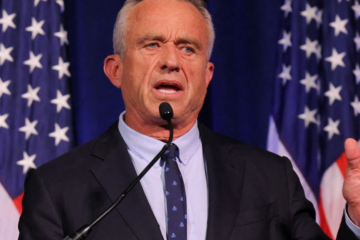Ohio’s legislature just took a bold step that could reshape the state’s budding cannabis industry. In a late-night session, the House passed a bill tweaking the voter-approved marijuana law while slamming the door on most intoxicating hemp products. This move aligns with a fresh federal ban, sparking debates over consumer access and business impacts. What’s next for smokers, sellers, and everyday Ohioans?
The Ohio House approved the legislation early Thursday, aiming to restrict hemp sales and adjust marijuana rules. The bill bans the sale of intoxicating hemp products outside licensed marijuana dispensaries. This targets items like THC-infused drinks and edibles that don’t fit a tightened federal definition of hemp.
Lawmakers revised a Senate-passed version, stripping out some hot-button ideas like higher taxes on cannabis sales. Instead, they focused on aligning state rules with federal updates signed by President Trump. The changes include a temporary green light for THC beverages, but only if sold through dispensaries.
This isn’t just about pot; it’s a response to concerns over unregulated hemp flooding gas stations and stores. Supporters say it protects kids and ensures safety, while critics argue it kills jobs in a growing market.
One key provision sets strict THC limits for hemp, capping it at levels that make many popular products illegal unless handled by dispensaries.
How This Ties to Ohio’s Voter-Approved Marijuana Law
Ohio voters made history in 2023 by passing Issue 2, legalizing recreational marijuana for adults 21 and up. That law allowed possession of up to 2.5 ounces of flower, home growing of six plants, and a 10% tax rate. Sales kicked off in late 2024, with dispensaries raking in millions.
But lawmakers have been itching to tweak it. The new bill scales back some freedoms without gutting the core. For instance, it keeps home growing intact but adds rules on public use and product potency.
The conference committee, made up of House and Senate members, hashed out differences after the Senate rejected House changes. They landed on a compromise that burns most “intoxicating” hemp while shielding key marijuana policies from stricter limits.
This follows a pattern: right after voters approved Issue 2, some Republicans floated ideas like banning home grows and jacking up taxes to 15%. Those got shot down amid public outcry.

The Federal Ban’s Role in Ohio’s Decision
A new federal law, tucked into a spending bill signed by Trump, redefined hemp with a hard cap on THC content. It bans products exceeding 0.4mg of THC per container, wiping out many full-spectrum CBD items and intoxicating edibles nationwide.
Ohio’s bill mirrors this, forcing hemp sales into dispensaries or out of the market. This could eliminate 95% of the hemp market within a year, according to industry experts. Nationally, the hemp sector supports about 300,000 jobs and generates $28 billion annually, per recent estimates from hemp advocacy groups.
In Ohio, small businesses fear the hit. Gas stations and convenience stores that sell these products could lose big revenue streams. On the flip side, licensed dispensaries might see a boost as the only legal spots for these items.
Lawmakers say it’s about closing loopholes from the 2018 Farm Bill, which legalized hemp but led to a boom in unregulated THC goods. The federal change, pushed by figures like Mitch McConnell, aims to protect consumers from untested products.
Here’s a quick breakdown of affected products:
- THC-infused beverages: Temporarily allowed, but only in dispensaries.
- Delta-8 and THCA items: Banned unless they meet low-THC rules.
- Full-spectrum CBD: Many versions outlawed due to trace THC.
Impacts on Businesses and Consumers
Ohio’s cannabis market is still young, with sales hitting $150 million in the first few months of recreational rollout, based on state Division of Cannabis Control data from early 2025. The bill could redirect hemp dollars into this regulated space, potentially growing it further.
For consumers, choices narrow. Folks using hemp for pain relief or relaxation might turn to dispensaries, facing higher prices and taxes. Veterans and chronic pain sufferers, who often rely on affordable CBD, could feel the squeeze hardest.
Critics, including hemp farmers, warn of economic fallout. One study from the U.S. Hemp Roundtable in 2024 projected that similar bans could cost states billions in lost taxes and jobs. In Ohio, where agriculture is king, this hits home.
Supporters point to safety. Reports from the FDA in 2025 highlighted risks like inconsistent dosing in unregulated hemp, leading to hospitalizations.
The bill now heads back to the Senate for a final vote. If passed, it could take effect soon, giving businesses a year to adapt under the federal timeline.
This Ohio showdown reflects a national tug-of-war over cannabis reform. As more states legalize, federal rules lag, creating patchwork laws that confuse everyone. But with Trump’s ban in play, states like Ohio are racing to catch up, balancing voter will with safety concerns. The result? A tighter grip on what you can buy and where, potentially stabilizing the market but at the cost of options.




